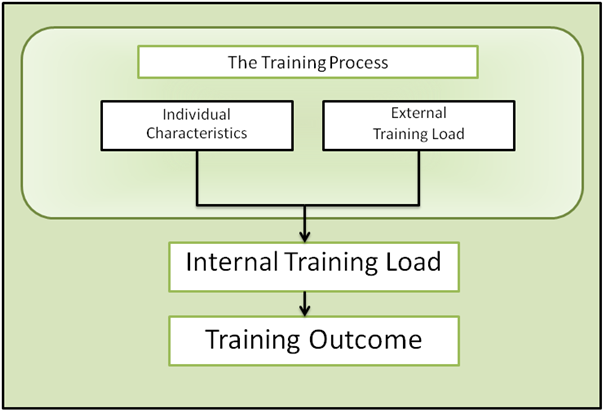
The performance industry market is flooded with devices that track and log training volume using GPS and accelerometers. The manufactures of these devices and tracking tools do a good job of selling these devices as “sports science.” Tracking work-out volume is only one part of the training equation, and today we want to discuss a term (and concept) that is a more complete look at an athlete’s training experience, Internal Load.
Internal Load represents an individual athlete’s response to training, and can be quantified by the intensity and duration of the physiological stress imposed on the athlete. To better understand how internal load fits in to the training equation we’re going to use the graphic below.
Getting a better idea of what Internal Load is requires understanding external load. External load represents all the training modalities imposed on the athlete. External load is what can be measured by GPS and accelerometers. It has also been traditionally measured by sets and reps, duration, distance, etc. When you combine external load with individual characteristics like sleep, nutrition, stress and other factors, you get a full idea of the athlete’s experience, called the Internal Training Load.
How do you measure Internal Load? One way that has been studied and proven is heart rate. An athlete’s heart rate is a great way to assess how the cardiovascular system is coping with the external training load. It has also been shown to to be a good indicator of individual characteristics. For example, if an athlete who normally performs a given training set (3000 meters of swimming) at a given heart rate may have an elevated heart rate (indicating more cardiovascular stress) when performing that set while under sleep deprivation or elevated stress level. Heart rate monitors can be annoying or just plain not available, so what is another way to measure Internal Load?
RPE (Rated Perceived Exertion) is another great way to measure internal load. RPE is a scale used to measure the intensity of exercise. The RPE scale runs from 0 – 10 (nothing at all — very, very heavy). RPE has been strongly correlated with both heart rate (internal load) and GPS (external load) showing that athletes are accurate raters of their own exertion levels. Athletes can use the scale to let you know how hard they felt a session was.
The take-home message here is that with all the new technology out there we can’t get too caught up in measuring training volumes. A training volume that is manageable for an athlete one day, can be complete over-exertion another day under different circumstances. As performance coaches it’s easy to get caught up in improving our athletes’ ability to train. At the end of the day we have to remember that our job is not to turn our athletes into professional exercisers, it is to get them better at their particular sport. GPS and accelerometers are great measurement tools, but they are no substitute for checking in constantly with your athletes; asking them how they’re feeling, how they are sleeping and eating, and how their training is going. Athletes are incredibly attuned to their own bodies and can offer us insight that no single piece of technology can.